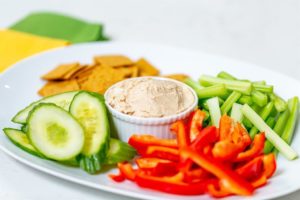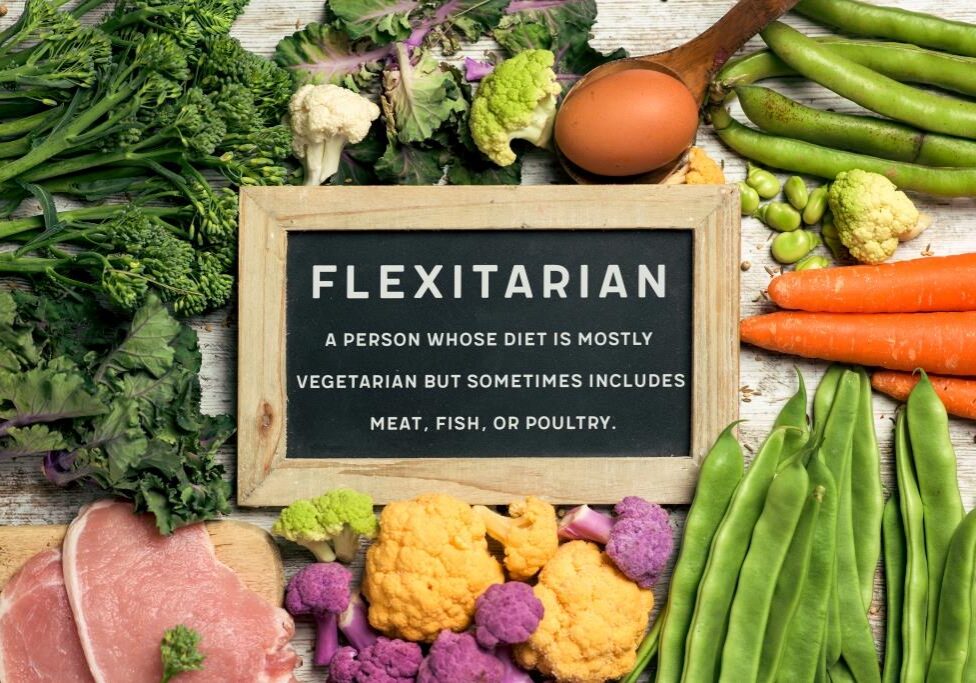If you’ve been following the latest diet trends, then you know the flexitarian diet is garnering a lot of attention. But what is a flexitarian diet and why is it so popular? The answer is simple. Flexitarians have stumbled upon the secret to dieting success – a little flexibility and a whole lot of vegetables!
What is a Flexitarian Diet?
Flexitarians have been growing in number for more than a decade. In fact, googling the question “What is a flexitarian diet?” will net you a very long list of results. (We’re not kidding; it’s in the millions.) You’ll find everything from foods, recipes, grocery lists, and meal plans to nutritional values, calorie counts, health benefits, and testimonials. But don’t let the deluge of information confuse you. Flexitarians are not vegans or vegetarians. Nor are they bound by a collection of rigid rules, restrictions, or limitations. Rather, a flexitarian diet is a set of guidelines that show you how to benefit from a plant-based diet, without having to nix meat and other animal products entirely, if not desired.
Benefits of a Flexitarian Diet
According to healthline.com, dietitian Dawn Jackson Blatner created the flexitarian diet in 2009 to promote a healthier lifestyle – for humans and the planet. By gently prodding people into eating less meat and more plant-based foods, flexitarians believe we can reduce rates of cancer, diabetes, and heart disease, while also conserving natural resources and curbing greenhouse gas emissions.
The flexitarian diet is a winner because its rules are simple and few. First, eat mostly fruit, vegetables, legumes, nuts, seeds, and whole grains, while indulging in animal products sparingly. And second, avoid processed, fast, and fried foods, added sugars, and sweets. That’s it. The result is a diet that’s naturally low in calories (roughly 1,500 per day) and high in fiber, nutrients, cancer-fighting antioxidants, and heart-healthy fats. Proponents swear by it as an effective means of lowering blood pressure, managing cholesterol levels, and achieving weight loss goals, three strategies known to effectively stave off a host of life-shortening diseases.
Other plant-based diets also improve health outcomes, but the flexitarian diet is different because it emphasizes flexibility. Meat, seafood, and dairy are not forbidden. On the contrary, enjoying a burger, fish fillet, or omelet from time-to-time is actually encouraged. Having options makes it easier to stick with the diet, especially if you’re traveling or dining out. Think of flexitarians as “flexible vegetarians” whose shared goal is a sustainable, healthy diet regimen, as opposed to an occasional short-term win.

Flexitarians Don’t Skimp on Flavor or Nutrition
Apparently, “sacrifice” and “guilt” are not part of the flexitarian vernacular. Healthline.com’s weekly flexitarian meal plan is chock full of hearty soups, vibrant smoothies, eye-pleasing salads, veggie-packed wraps, and a seemingly limitless parade of scrumptious grilled, roasted, broiled, and baked entrées. Really, who wouldn’t be able to adhere to a diet that served up coconut yogurt with bananas and walnuts for breakfast, a whole-grain wrap with hummus, fresh veggies, and chickpeas for lunch, and grilled salmon with sweet potato and green beans on the side for dinner? And that’s just one day.
The full plan covers a week’s worth of flexitarian meals carefully curated to ensure you get all the protein, carbs, fat, and other essential nutrients your body requires. And since flexitarians can and do eat meat, seafood, and dairy in moderation, they are not at risk of missing out on crucial vitamins and minerals typically associated with animal products, such as vitamin B12, omega-3 fatty acids, calcium, zinc, and iron.
Even though you might have to cut back on your red meat habit, the flexitarian diet is definitely worth a try. Start with just a few recipes. You might be pleasantly surprised. Flexitarians are pretty crafty when it comes to finding creative ways to substitute plant-based proteins for animal proteins. Picture a sizzling tofu-veggie stir fry or a filling bean and rice burrito bowl topped with avocado and spicy sriracha. Or a Sauerkraut and Chickpea Salad. And if you never eat Mexican food without sour cream, consider sampling some of the plant-based alternative dairy products available in our online store or at your local market. Our wildCREAMERY products are so smooth and rich; you’ll swear they’re the real deal. What’s more, most are lower in fat and easier to digest than traditional dairy. So, go ahead. Top off your Buddha bowl with sour cream, coat your corn cob with melted butter, or smear your bagel with cream cheese – and feel free to leave the guilt behind.
If we weren’t sold on the benefits of a flexitarian diet before today, we are now. After scouring a slew of journal articles, blogs, websites, and recipes, we’ve got the answer to our question: What is a flexitarian diet? It’s easy…it’s flexible…it’s healthy…it’s eco-friendly…it’s sustainable…and it’s delicious!
